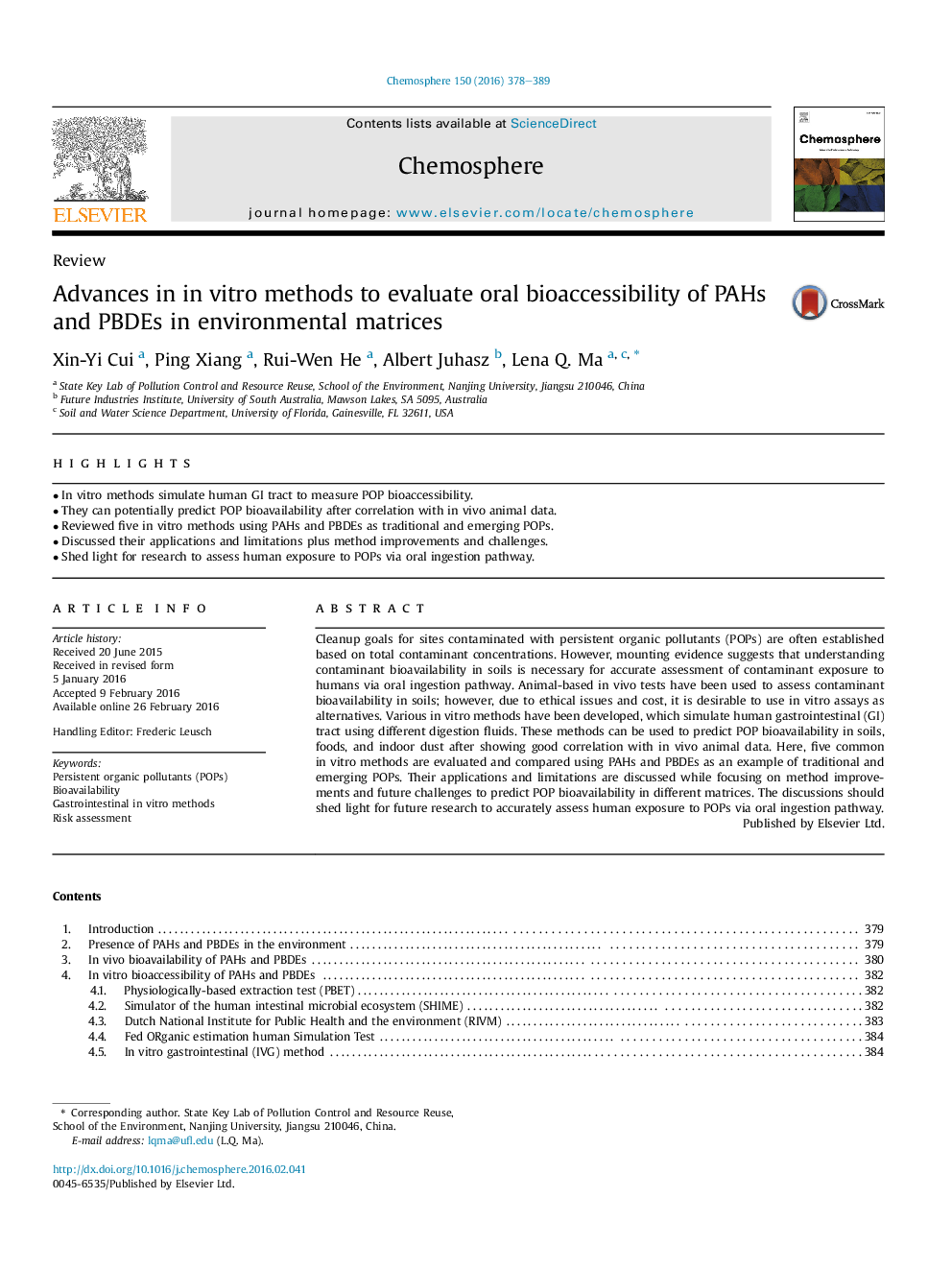| Article ID | Journal | Published Year | Pages | File Type |
|---|---|---|---|---|
| 6306787 | Chemosphere | 2016 | 12 Pages |
Abstract
Cleanup goals for sites contaminated with persistent organic pollutants (POPs) are often established based on total contaminant concentrations. However, mounting evidence suggests that understanding contaminant bioavailability in soils is necessary for accurate assessment of contaminant exposure to humans via oral ingestion pathway. Animal-based in vivo tests have been used to assess contaminant bioavailability in soils; however, due to ethical issues and cost, it is desirable to use in vitro assays as alternatives. Various in vitro methods have been developed, which simulate human gastrointestinal (GI) tract using different digestion fluids. These methods can be used to predict POP bioavailability in soils, foods, and indoor dust after showing good correlation with in vivo animal data. Here, five common in vitro methods are evaluated and compared using PAHs and PBDEs as an example of traditional and emerging POPs. Their applications and limitations are discussed while focusing on method improvements and future challenges to predict POP bioavailability in different matrices. The discussions should shed light for future research to accurately assess human exposure to POPs via oral ingestion pathway.
Related Topics
Life Sciences
Environmental Science
Environmental Chemistry
Authors
Xin-Yi Cui, Ping Xiang, Rui-Wen He, Albert Juhasz, Lena Q. Ma,
